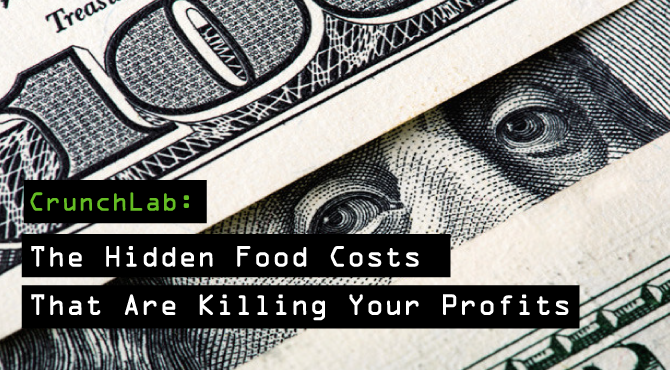Restaurant management software has many benefits, but one of the most useful reports your back office solution can generate is the Actual vs. Theoretical food cost report. If you've never worked with an Actual vs. Theoretical (A/T) food cost report before, we promise you it will be an eye-opener. This report reveals what your actual food cost is vs. what it should be for a given period, and when used correctly, it can help you rapidly troubleshoot restaurant food cost across an entire enterprise and greatly improve your profitability.
Below is a closer look at how the A/T report works.
The Theoretical food cost calculation:
Prices paid for each ingredient x Amount of each ingredient in each recipe x Menu Mix (how many of each recipe was sold)
Example: Let's say a restaurant only sells cheeseburgers. The recipe is:
- 1 patty at .33 cents
- 1 bun at .12 cents
- 1 slice of cheese at .05 cents
Overall cost is (.33 + .12 + .05), or .50 cents per cheeseburger sold. If the restaurant sells 100 cheeseburgers, its Theoretical food cost is $50.
The Actual food cost calculation:
Beginning of week inventory values + Additional inventory purchases – End of week inventory values = your actual food cost
Cheeseburger example:
- beginning of week cheeseburger recipe inventory values = $125
- recipe purchases during week were $70
- end of week recipe inventory values = $135
The actual food cost for the cheeseburgers is (125 + 70 – 135) = $60.
Measuring Actual Food Cost vs. Theoretical Food Cost
Actual Food Cost – Theoretical Food Cost = Variance ($60 – $50 = $10)
After comparing Actual to Theoretical costs in the examples above, the restaurant spent $10 more on food than it should have (the variance).
The next goal is to use available reporting tools to find and eliminate the source(s) of the excess cost. Was it the patty, the bun or the cheese that contributed to the lost profits – or was it a combination of all three? The point is to find the root cause for the loss and then fix it.
Keep Measuring and Keep Learning
Restaurant management software is such an important part of every growing company. It brings the entire enterprise more operational discipline and efficiency while seriously impacting your bottom line food and labor cost savings by 2-5% or more. If you want to dig even deeper into this important food cost topic, we recommend visiting this CrunchTime blog article and video.













